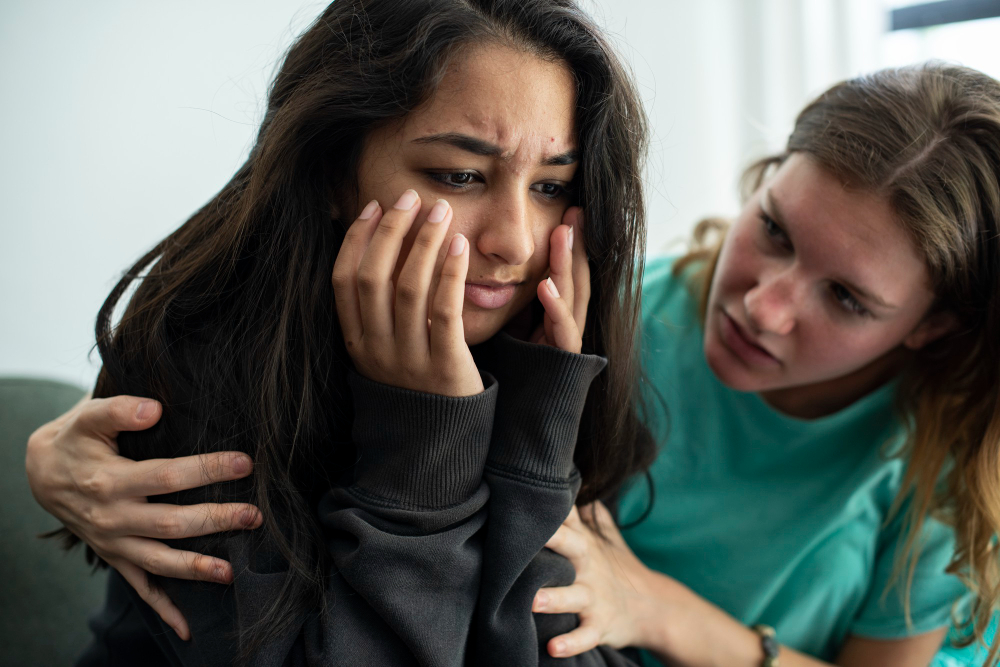Crying is a natural emotional response to feelings such as sadness and hurt. It is characterised by increased tearing, which can be due to stress, happiness, anger, suffering, or physical pain. Tears produced by our eyes are a transparent liquid secreted by the tear gland. They help lubricate the eyes, remove irritants, and aid in the immune system’s functioning. They also act as the natural pain response of our human body.
Crying is a release of built-up energy with feelings. It can also be a survival mechanism and a signal to address something. It may mean that the person is frustrated, overwhelmed or trying to get someone’s attention. Crying may also serve a biochemical purpose, as it helps release stress hormones or toxins from the body. It also has a purely social function as it helps in winning support from others.
People can cry for many reasons. Sometimes they call as a direct response from the heart, but some people cry to blackmail others emotionally. They cry in response to a situation, knowing that it will make the other person feel bad about themselves and, as a result, they will be able to manipulate them. Crying, a controlling mechanism, can be either intentional or subconscious. The goal is to force another person, a husband, child, or parent, into a course of action they may not otherwise have taken. Women tend to cry more than men do. In the 1980s, William H. Frey found that women cry 5.3 times a month, while men cry 1.3 times per month, an average.
According to the evolutionary perspective, a man showing emotion, especially around other men, would be at risk of public scrutiny. The man will look weak, encouraging others to attack him. Hence, men can rarely be seen crying in public. However, showing emotions to others is seen as a sign of trust for women. Testosterone levels can stop men from crying, as seen in men treated with prostate cancer drugs. These men show reduced testosterone levels and are more likely to call because testosterone seems to have an inhibiting influence on crying.
Also, these differences in crying between men and women can occur because of hormone levels. A study by Kehinde et al.in 2012 found that women have 60 per cent more prolactin (a hormone that stimulates milk production in women after childbirth) than the average male. Emotional tears, especially in prolactin, explain why women cry more often than men. Women are more likely to use tears to manipulate others’ emotions. People often learn these patterns due to their childhood experiences which influence their future behaviours. Sometimes, they don’t realise what they are doing.
People’s professions may also play a role in crying differences between the sexes. As women dominate nursing positions, they are presented with more emotional situations. In contrast, men tend to go into more technical fields, less likely to offer such opportunities for expressing emotions. Women may also cry in an attempt to appear regretful. Because of this, they may receive lesser punishments for misbehaviours such as having an affair or shoplifting.
Read: Menstrual Hygiene Day
As a Mental Health Professional, Psychologist and Stress Counsellor, Dr Nisha Khanna proffers online, telephonically and face-to-face Counselling Services. If you live in Delhi, India or any other part of the World, you can approach us through online and offline modes related to any such issues. For further details, visit Bye Tense, or call us at +91-9818211474




Follow Us